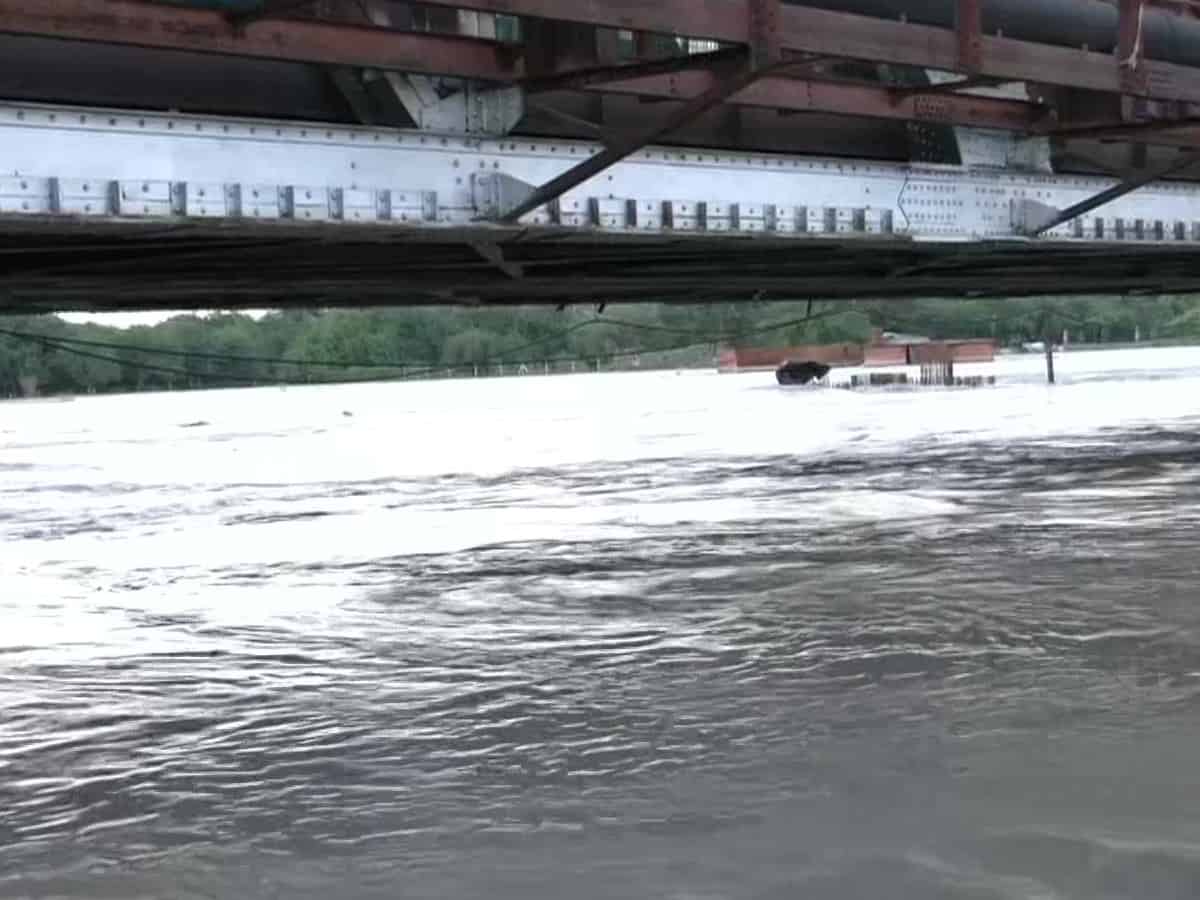
New Delhi: A swollen Yamuna flooded low-lying areas along the riverbanks in Delhi on Tuesday, prompting authorities to evacuate hundreds of people and suspend rail traffic movement on the Old Yamuna Bridge.
The water level in the river shot up to 206.38 metres by 7 pm, much above the danger mark of 205.33 metres and the highest since August 2019.
The low-lying areas near the river in Delhi are considered vulnerable to flooding and are home to around 37,000 people.
“Most of the people have been shifted to community centres, schools and temporary tents. Nobody is at risk,” a senior government official said.
The river breached the danger mark of 205.33 metres in Delhi on Monday night and the evacuation mark of 206 metres early Tuesday morning following heavy rain in the upper catchment areas over the last few days.
East Delhi District Magistrate Anil Banka said an evacuation alert was issued Tuesday morning.
“Around 12,000 people living in low-lying areas near the riverbanks have shifted to higher grounds. Arrangements have been made for their stay at government schools and night shelters in nearby areas,” he said.
Announcements are being made to caution people about a further increase in the water level, Banka said.
“Rail traffic over Old Yamuna Bridge/Delhi has been temporarily suspended since 16:17 hrs today as the water level in Yamuna river has crossed the danger mark. Trains shall be diverted to run via New Delhi,” a spokesperson of the Northern Railway said.
This is the second time within two months that the authorities are evacuating the people living in the river floodplains due to flooding.
The Yamuna had breached the danger mark of 205.33 metres on August 12, following which around 7,000 people were evacuated from the low-lying areas near the riverbanks.
The water level had shot up to 205.99 metres on August 13 before the river started receding.
The authorities reported a discharge rate of around 96,000 cusecs at 7 am from the Hathnikund barrage in Haryana. It reduced to around 29,169 cusecs by 6 pm.
The discharge rate was 2,95,212 cusecs at 6 am on Monday, which is the highest so far this year. One cusec is equivalent to 28.32 litres per second.
Normally, the flow rate at the Hathnikund barrage is 352 cusecs, but the discharge increases after heavy rainfall in the catchment areas.
The water discharged from the barrage normally takes two to three days to reach the national capital.
Incessant rains have battered parts of Uttarakhand, Himachal Pradesh and north Uttar Pradesh over the last few days. Delhi also recorded a four-day long rain spell starting September 21.
The catchment of the Yamuna river system covers parts of Uttar Pradesh, Uttarakhand, Himachal Pradesh, Haryana, Rajasthan, Madhya Pradesh and Delhi.
Last year, the Yamuna breached the danger mark on July 30 and the water level at the Old Railway Bridge rose to 205.59 metres.
In 2019, the flow rate had peaked at 8.28 lakh cusec on August 18-19, and the water level in the river had hit the 206.60-metre mark.
In 1978, the river had swollen to the all-time record water level of 207.49 metres. In 2013, it had risen to 207.32 metres.
